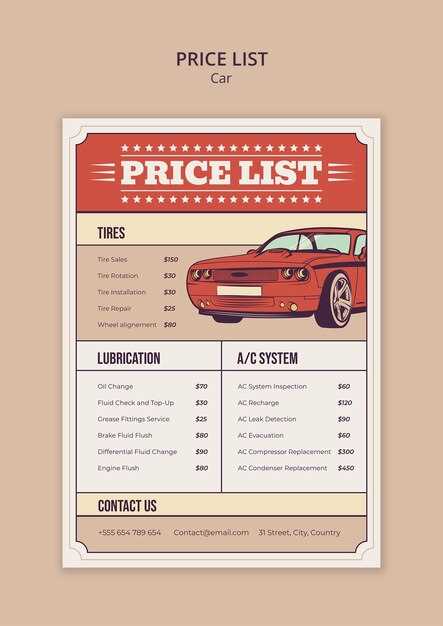
Buying a vintage car can be an exciting journey filled with the allure of nostalgia and the thrill of ownership. However, navigating the classic car market requires a keen eye and an understanding of the potential red flags that may indicate a problematic purchase. Recognizing these warning signs is crucial to ensure that your investment remains a source of joy rather than a financial burden.
When scouring listings for your dream vehicle, it is essential to be vigilant about inconsistent information and dubious claims. Sellers might embellish their descriptions or obscure the true condition of the car. Common issues like unclear titles, a lack of documentation, or vague service history can signify deeper underlying problems. Being aware of these red flags will help you avoid costly mistakes and ensure that you are making an informed decision.
This article aims to highlight the key signs to look out for when buying vintage cars, equipping you with the knowledge needed to navigate the market successfully. By familiarizing yourself with these crucial warning signs, you’ll be better prepared to find a classic gem without falling victim to potential pitfalls.
Identifying Inconsistent Vehicle History Reports

When buying a vintage classic car, one of the most crucial steps is to examine the vehicle history report. This document provides valuable insights into the car’s past, including ownership history, accident reports, and service records. However, inconsistencies within these reports can serve as a significant warning sign, indicating potential issues that could lead to costly repairs or even legal troubles down the line.
One common red flag is mismatched vehicle identification numbers (VINs). If the VIN listed on the report differs from the one on the car itself, that discrepancy should raise immediate concern. It can suggest that the vehicle has been altered, stolen, or involved in fraudulent activities. Always double-check that the VIN matches across all documents and locations on the vehicle.
Another inconsistency to watch for is the ownership timeline. A vehicle history report that indicates an unusually high number of previous owners in a short period can be a warning sign. This could imply that the car has persistent issues that made previous owners sell it quickly. It’s essential to ask the seller about any reasons for rapid ownership changes.
Be wary of reports that show a clean record without any accidents, while the seller makes claims about the car’s show-worthy condition due to extensive restoration work. If a vehicle has undergone extensive bodywork or restoration, it’s likely there were previous issues that warranted such repairs. Look for records of repairs or restoration work to ensure that the seller’s statements align with the vehicle’s actual history.
Additionally, verify the odometer readings provided in the report. If there are significant discrepancies between odometer statements from different times or digital records that indicate rapid mileage accumulation, this could indicate potential rollbacks or tampering.
Ultimately, a thorough examination of the vehicle history report is essential when buying a vintage classic car. By identifying inconsistencies, potential buyers can avoid pitfalls that would lead to regret and financial loss. Always perform due diligence and consider seeking professional assistance if you encounter any red flags in the documentation.
Recognizing Signs of Poor Maintenance and Upkeep
When considering the purchase of a vintage car, it’s crucial to be vigilant for warning signs that indicate poor maintenance and upkeep. A lack of attention to detail can lead to costly repairs down the line, making it vital to recognize these red flags early in the evaluation process.
One common sign of neglect is the condition of the vehicle’s exterior. Look for rust, peeling paint, or mismatched panels. These issues can point to a lack of regular detailing and maintenance. Furthermore, inspect the undercarriage for signs of rust or damage, which can be indicative of prolonged exposure to moisture without proper protection.
The state of the engine is another critical area to assess. Check for leaks around oil filters and gaskets, as well as unusual noise while running. An unkempt engine compartment, with dirt and grime buildup, may suggest neglect that could impact performance and longevity.
Interior conditions also reflect overall maintenance habits. Torn upholstery, stained carpets, and malfunctioning components are warning signs. Additionally, check for signs of water damage, such as mildew or corrosion, which can result from improper sealing and maintenance practices.
A well-maintained vintage car should have a clear and documented service history. Be wary of vague records or missing documentation, as they can indicate a lack of regular care. An absent maintenance log can mean that the car may not have undergone necessary checks and repairs, leading to future issues.
Lastly, pay attention to the seller’s attitude. A transparent and knowledgeable seller is more likely to have invested the time and resources needed for proper upkeep. If they appear evasive or defensive about the car’s condition, it’s a potential warning sign of underlying problems.
Evaluating Seller Credibility and Communication

When considering the purchase of a vintage vehicle, assessing the seller’s credibility is crucial. Certain signs can indicate whether a seller is trustworthy or if you should proceed with caution. Look for transparency in communication; a credible seller will provide clear and detailed information about the car’s history, condition, and any past repairs.
Warning signs may include vague descriptions, hesitance to answer questions, or reluctance to share maintenance records. A reputable seller should be willing to engage in discussions about the car’s background and offer insights into its provenance. Examine how promptly they respond to inquiries; delayed responses can be a red flag.
A buyer should also gauge the seller’s knowledge of the vehicle. An informed seller who can confidently discuss technical aspects and vintage specifics indicates a deeper connection to the car and a greater likelihood of honest representation. If a seller struggles to provide information or seems evasive, this could be a warning sign.
In addition to direct communication, consider the seller’s online presence. A credible seller often has a history of positive reviews or testimonials from previous buyers. Look for consistency in their online listings, as discrepancies may suggest dishonesty. Researching their reputation through forums and social media can also unveil valuable information.
Ultimately, trust your instincts; if something feels off, it’s worth investigating further before proceeding with a purchase. Evaluating seller credibility and communication is essential in avoiding potential pitfalls when dealing with classic cars.











